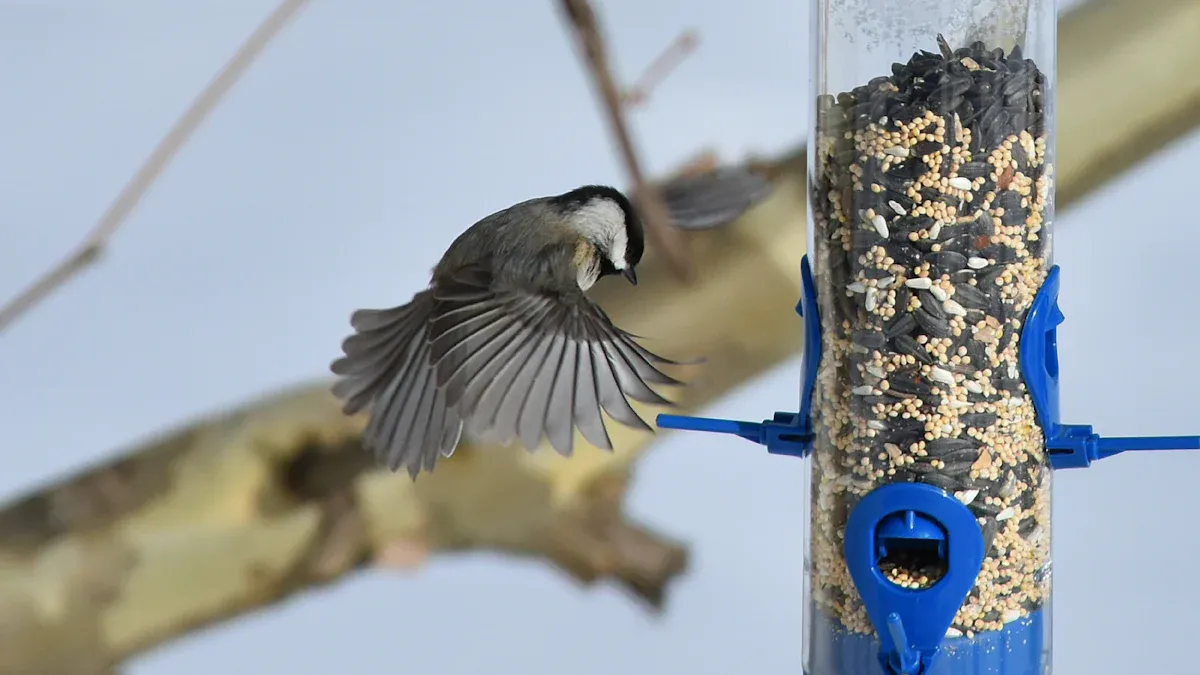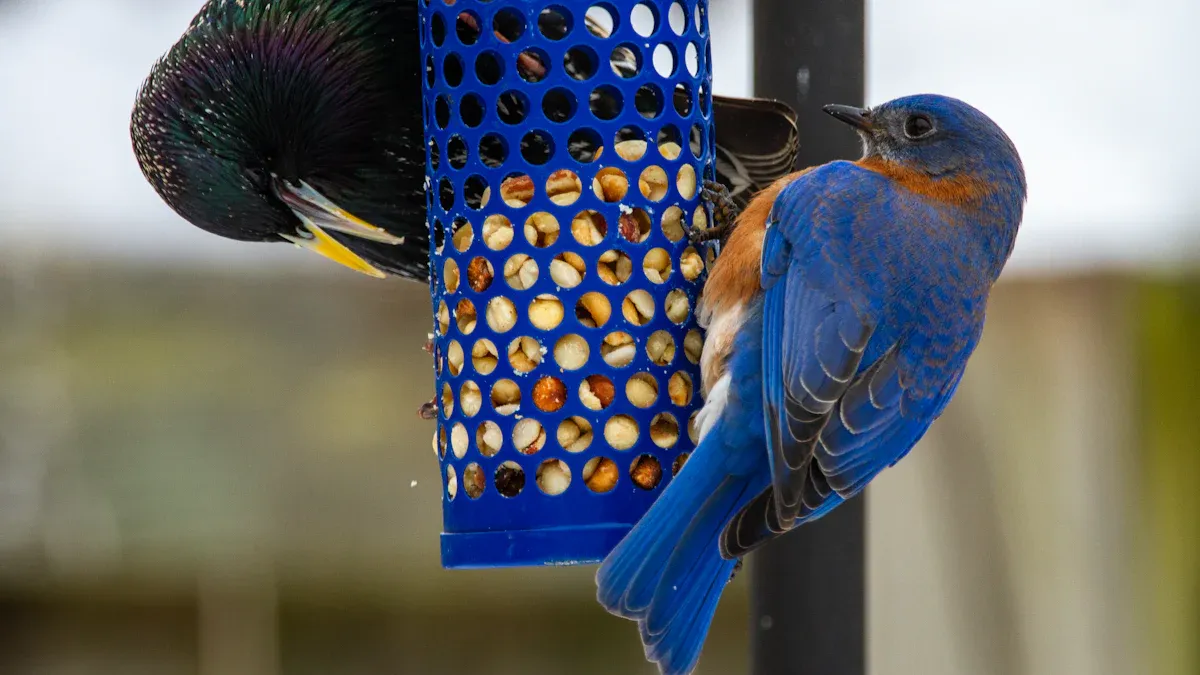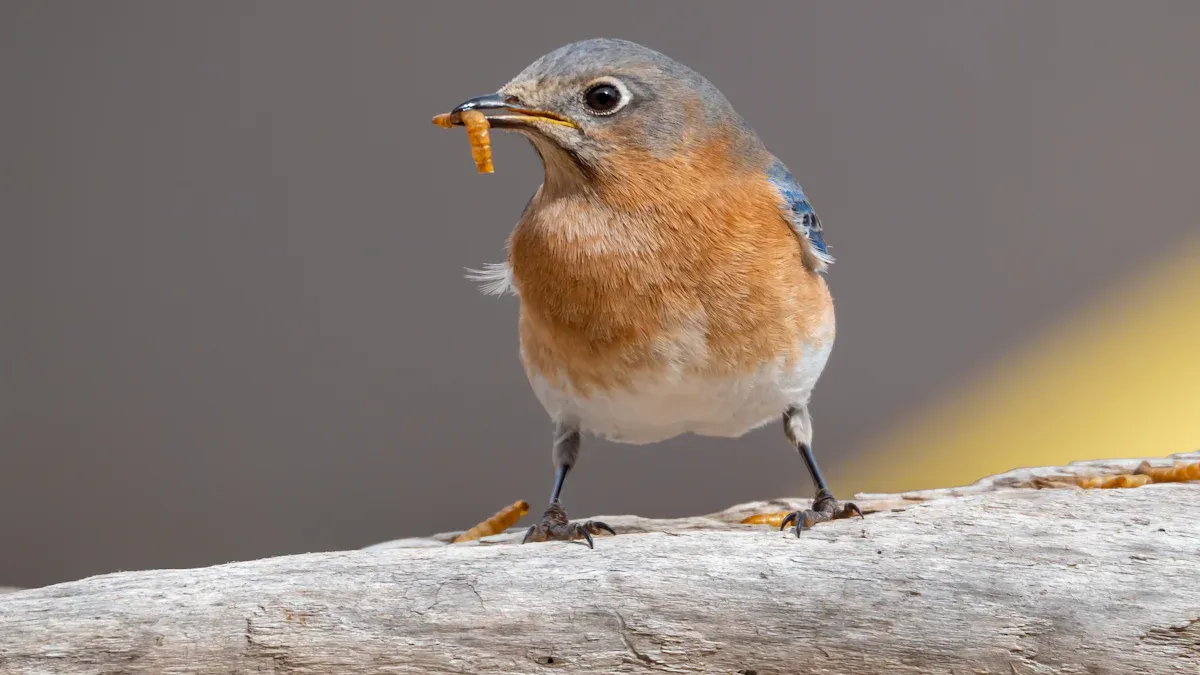
I’ve found that dried mealworms for wild birds are a game-changer for feeding them. Packed with protein, these dried mealworms help birds stay energized and healthy. Plus, they’re rich in B vitamins and minerals, which support metabolism and overall health. Whether it’s migration season or winter, these treats keep birds thriving in my backyard.
Key Takeaways
- Dried mealworms are full of protein and fat. They give birds important energy, especially in winter or when migrating.
- These mealworms are simple to store and use. Feeding birds with them is easy and clean for anyone.
- Soaking dried mealworms before feeding helps birds get water. It also makes eating easier, especially during breeding time.
Nutritional Benefits of Dried Mealworms for Wild Birds

High protein and fat content for energy and growth
I’ve noticed that birds in my yard seem more active and energetic when I offer them dried mealworms for wild birds. These little treats are packed with protein—about 50% to 55%—and contain around 24% fat. That’s a lot more than many other bird feed options! Here’s a quick comparison:
| Nutrient | Dried Mealworms |
|---|---|
| Crude Protein | 50% – 55% |
| Crude Fat | 24% – 25% |
This high protein content helps birds grow strong and repair their feathers. The fat provides the energy they need to fly, forage, and stay warm, especially during colder months. It’s like giving them a superfood snack!
Essential nutrients for seasonal needs like migration and breeding
Migration and breeding seasons can be tough on birds. I’ve learned that dried mealworms for wild birds are a lifesaver during these times. They’re rich in B vitamins, which boost metabolism, and contain minerals and amino acids that support overall health. These nutrients are vital for migratory birds to fuel their long journeys and for breeding birds to raise healthy chicks. I always make sure to stock up on mealworms during these seasons to give my feathered friends the extra support they need.
Promotes better digestion with high fiber content
Another great thing about dried mealworms is how they help with digestion. Their high protein and fiber content keeps birds’ digestive systems running smoothly. I’ve noticed that birds seem to thrive when I include mealworms in their diet. They’re not just a tasty treat—they’re also a way to keep birds healthy and happy.
Convenience of Using Dried Mealworms
Long shelf life and easy storage
One of the things I love most about dried mealworms is how easy they are to store. Unlike live mealworms, which need refrigeration and constant care, dried mealworms can sit on a shelf for months without any fuss. This makes them perfect for year-round use. I don’t have to worry about them spoiling quickly or taking up space in my fridge. It’s such a relief to know I can stock up and always have a reliable food source for the birds in my yard.
Mess-free and simple to handle
Let’s be honest—handling live insects isn’t for everyone. I remember feeling squeamish the first time I tried feeding live mealworms to birds. That’s why I appreciate how dried mealworms simplify the process. I just pour them into a feeder or dish, and I’m done. No wriggling bugs, no mess, and no stress! It’s a straightforward and beginner-friendly way to enjoy feeding birds without the discomfort of dealing with live insects.
Versatile feeding options for different bird species
Dried mealworms for wild birds are incredibly versatile. I’ve noticed that they attract a wide variety of species, from bluebirds to chickadees. You can offer them in a dish, mix them with seeds, or even sprinkle them on the ground. This flexibility makes it easy to cater to the feeding habits of different birds. Whether you’re trying to attract ground feeders or tree-dwelling species, dried mealworms are a great option to keep your feathered visitors happy.
How Dried Mealworms Attract Wild Birds

Appeals to insect-eating birds like bluebirds and robins
I’ve noticed that dried mealworms for wild birds are a magnet for insect-eating species like bluebirds and robins. These birds naturally hunt for insects, so mealworms are an easy substitute for their favorite food. While live mealworms might be their first choice, I’ve found that many birds, including chickadees, wrens, and nuthatches, will happily snack on dried mealworms when they’re available. It’s amazing to see how quickly they flock to my feeders once I put some out. The high protein content in mealworms makes them irresistible, especially during times when natural insect populations are low.
Encourages visits from rare and seasonal species
One of the best surprises I’ve had while using dried mealworms is spotting rare or seasonal birds in my yard. During migration, I’ve seen thrushes and kinglets stop by for a quick meal. These birds need extra energy for their long journeys, and mealworms provide the perfect boost. Even in winter, when food is scarce, I’ve noticed woodpeckers and other less common visitors showing up. It’s like hosting a bird buffet that attracts guests I wouldn’t normally see.
Enhances birdwatching with increased activity in your yard
Adding dried mealworms to my feeders has completely transformed my birdwatching experience. The increased activity is incredible! Bluebirds, robins, and even woodpeckers seem to visit more often, creating a lively and entertaining scene. Watching them interact and feed is such a joy. Plus, knowing I’m helping them stay healthy and energized makes it even more rewarding. If you’re looking to bring more life to your yard, mealworms are a game-changer.
Tips for Feeding Dried Mealworms to Wild Birds
Best practices for feeder placement and types
When I first started feeding birds, I didn’t realize how much feeder placement mattered. Over time, I’ve learned a few tricks to attract more birds while keeping them safe. Here’s what works best for me:
- Tube feeders are perfect for small birds like chickadees and finches. They’re easy to clean and reduce waste.
- Hopper feeders hold larger amounts of food and attract a variety of species.
- Platform feeders are great for ground-feeding birds, but I make sure to clean them often to prevent disease.
- I also use Nyjer feeders for goldfinches since they’re designed for small seed-eating birds.
I always place my feeders near shrubs or trees. This gives birds a safe spot to perch and hide from predators. To avoid window collisions, I keep feeders at least 10 feet away from the house. Plus, I position them where I can enjoy the view from my window—it’s like having a front-row seat to nature!
How much to feed and when to offer mealworms
I’ve found that offering the right amount of dried mealworms for wild birds makes a big difference. Birds love them, but I try not to overfeed. Mixing mealworms with seeds adds variety and stretches my supply. I usually put out a small handful in the morning and another in the late afternoon. This timing works well because birds are most active during these hours.
If I notice the mealworms disappearing too quickly, I’ll use a specialized feeder to prevent waste. Sometimes, I rehydrate the mealworms by soaking them in water. This makes them softer and easier for birds to eat, especially during breeding season when parent birds are feeding their chicks.
Soaking mealworms for easier consumption during certain seasons
Soaking dried mealworms is a simple trick that’s been a game-changer for me. During dry seasons, birds need extra hydration, and soaked mealworms provide both food and moisture. It’s especially helpful for parent birds feeding their nestlings since the softer texture is easier for little beaks to handle.
To soak them, I just place the mealworms in a bowl of water for about 10 minutes. It’s budget-friendly and gives the birds a boost when they need it most. I’ve noticed that during hot summers or dry winters, this small effort makes a big difference in keeping my feathered friends healthy and happy.
Dried mealworms for wild birds have completely transformed how I connect with nature. They’re packed with protein, B vitamins, and essential minerals, making them a powerhouse for bird health. I love how they attract species like bluebirds and robins, turning my yard into a lively birdwatching haven. Just sprinkle them around or mix them with seeds, and you’re set!
Remember, moderation is key. Overfeeding can lead to imbalances, so pair mealworms with other foods like fruits and seeds for a balanced diet.
Whether you’re just starting out or you’ve been feeding birds for years, dried mealworms are a simple, effective way to support your feathered friends and enjoy the beauty of wildlife up close.
FAQ
How do I store dried mealworms to keep them fresh?
I store them in an airtight container in a cool, dry place. This prevents moisture and keeps them fresh for months. No refrigeration needed!
Can I mix dried mealworms with other bird food?
Absolutely! I often mix them with seeds or suet. It creates a balanced diet and attracts a variety of bird species to my yard.
Are dried mealworms safe for baby birds?
Yes, but I soak them first. Soaking softens the mealworms, making them easier for parent birds to feed their chicks. It’s a simple way to help during breeding season.


